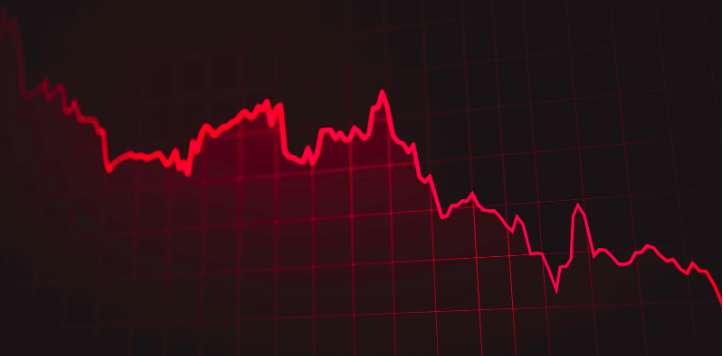
Outlook improves, but high oil, gas, and food prices will maintain inflationary pressures
While we have likely seen the back of record-high commodity prices, MNCs should expect input costs to remain high in 2023. In particular, firms in energy-intensive industries will continue to face significant cost pressures, as will those reliant on agricultural commodities for inputs. With shipping costs set to increase in H2 2023 as the global economic recovery takes hold, MNCs should consider stocking up on inventories to avoid being caught out.
Overview
2022 was a year of high input costs and high cost volatility, with spot prices for most commodities peaking at historical highs in the second quarter. Since then, many have seen a gradual decline, as disruptions from COVID-19 and the war in Ukraine have eased. This fall was also helped by slower demand from China, as the government imposed strict lockdowns in an attempt to eradicate COVID.
2023 will still be a year of high uncertainty when it comes to input costs. In Europe and in Asia, natural gas supply remains historically tight and is unlikely to ease soon. Meanwhile, disruptive actions on Russia’s part could lead to spikes in the prices of oil and food, while a rapid reopening in China and a global economic recovery will likely add to inflationary pressures.
Our View
- Shipping: Shipping costs have fallen substantially since their peak in late 2021, aided for the most part by a fall in the demand for goods following a boom during the pandemic. Still, it is worth noting that on most major shipping routes, freight costs are still above pre-COVID levels, albeit with some variation. As global economic activity slows in H1 2023 and consumers reduce discretionary spending as a result of high inflation and an erosion of pandemic-era savings, pressure on shipping should continue to ease, resulting in further downward pressure on costs. This fall in prices will be supported by the eventual recovery of air travel in China, which will increase the availability of air freight. However, an eventual global economic recovery in H2 2023, coinciding with peak demand ahead of Black Friday and the holiday season, will put upward pressure on freight costs.
- Oil: Despite a likely recession, oil prices are slated to remain high in 2023, although they will be lower than those seen in 2022. On the demand side, expect slower global economic activity to reduce global oil consumption. However, this downward pressure on prices will be partially offset by the reopening of the Chinese economy, the continued recovery in air travel, and Europe’s gas crisis, which will drive demand for petroleum-derived sources, such as diesel. On the supply side, OPEC will continue to keep supply tight to maximize revenues, and the US will eventually begin refilling its strategic petroleum reserves (SPRs), which implies oil purchases that will put upward pressure on prices. Meanwhile, Russia’s oil production by the end of 2023 will be around 2 million barrels per day (bpd) lower than it was at the start of 2021 due to sanctions, further adding to oil market tightness.
- Natural Gas: Natural gas will continue to be a much sought-after commodity in 2023, as war-related disruptions and limited LNG processing capabilities generate unprecedented tightness. In Europe, households and businesses should be able to get through the next few months with limited disruption, but the race will be on in 2023 to refill storages ahead of next year’s winter, only this time without Russian gas. As Europeans look to buy more liquefied natural gas (LNG), major LNG importers in Asia (China, Japan, South Korea) will have to compete with them, driving up prices in the region. To a lesser extent, prices will also be slightly higher in the US as the country seeks to ramp up its LNG exports to Europe, thereby reducing domestic supply.
- Copper: Despite being less impacted by war-related disruptions, copper prices remain at decade-high levels and are likely to remain there for 2023. This is driven largely by secular growth in the demand for copper, itself a product of increased demand for computer chips and electric vehicles. Meanwhile, chronic underinvestment in the industry resulting from a decade of relatively low prices is contributing to substantial supply tightness, which is unlikely to ease in the short term.
- Iron Ore: The outlook for iron ore remains muted as its main importer, China (70% of global iron ore imports), reels from a downturn in its property market. Regulatory developments, demographic changes, and slower economic growth in China will make it difficult for the industry to replicate its past performance, and iron ore prices are likely to remain low as a result.
- Agricultural Commodities: Food prices will remain high in 2023 as global grain supply is disrupted by the war in Ukraine. While the Black Sea Grain Initiative, a UN-backed deal between Russia and Ukraine that allows the latter to export grain through the Black Sea, was renewed by both parties, there remains considerable uncertainty as to whether it will stay in place throughout 2023. Should it collapse, major food exporters would likely introduce export bans to ensure their own food security, further adding to food inflation. Meanwhile, fertilizer prices remain at historically high levels, putting pressure on agricultural producers.
At FrontierView, our mission is to help our clients grow and win in their most important markets. We are excited to share that FiscalNote, a leading technology provider of global policy and market intelligence has acquired FrontierView. We will continue to cover issues and topics driving growth in your business, while fully leveraging FiscalNote’s portfolio within the global risk, ESG, and geopolitical advisory product suite.
Subscribe to our weekly newsletter The Lens published by our Global Economics and Scenarios team which highlights high-impact developments and trends for business professionals. For full access to our offerings, start your free trial today and download our complimentary mobile app, available on iOS and Android.

